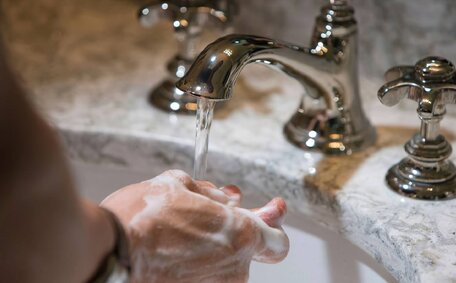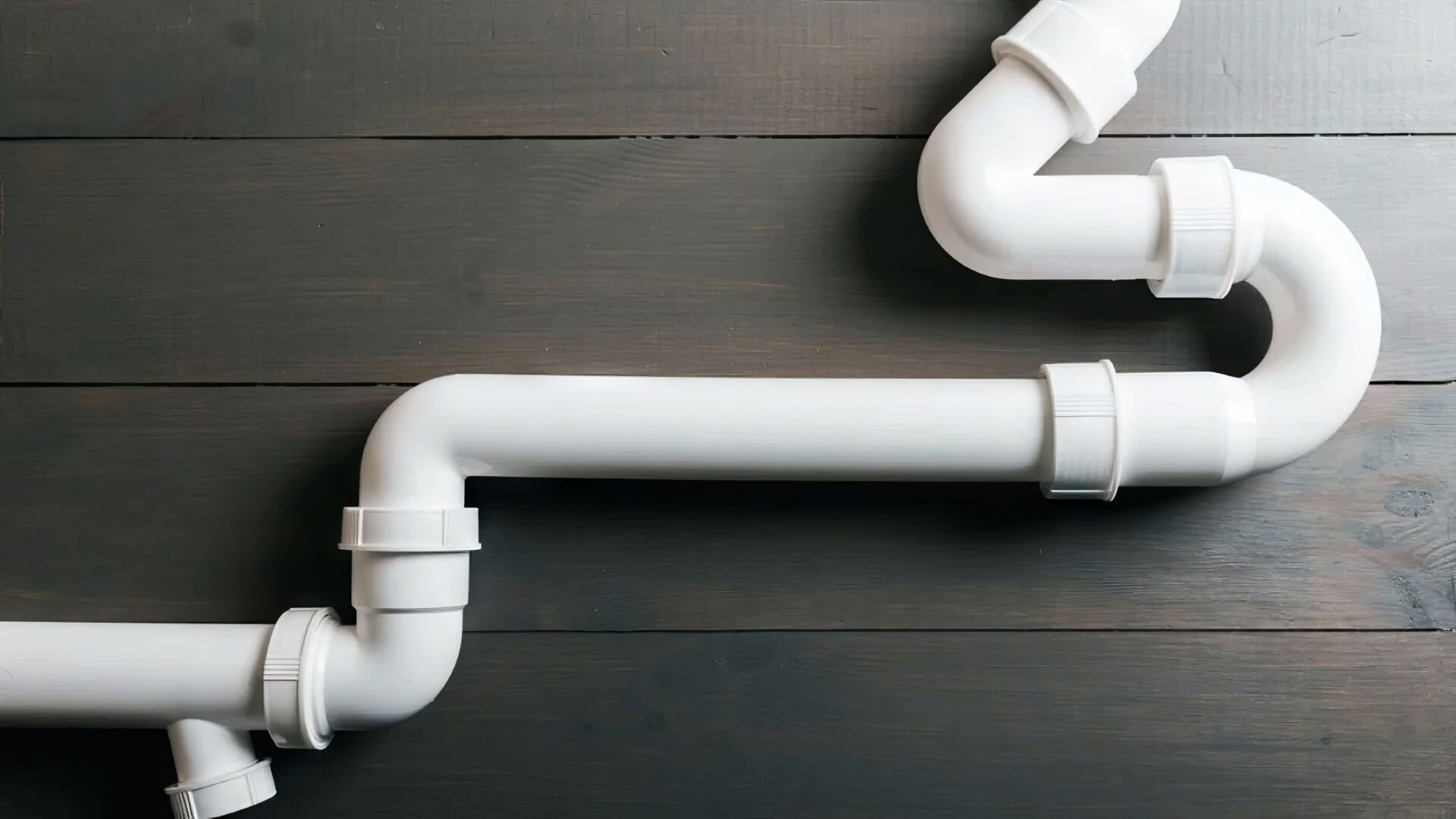Introduction to Pipe Relining and Epoxy Resin
Pipe relining is an innovative trenchless method for repairing damaged storm water pipes without the need for excavation.
The method includes determining the problem and inserting a flexible epoxy resin lining into the existing pipe to create a new, functional pipe. Epoxy resin is vital here, as it creates a strong, watertight barrier that restores flow and function.
Relining efficiently restores water flow in damaged pipes and minimises disruption and expenditure compared with traditional replacement methods. After cleaning and inspection, the epoxy resin liner is introduced to resolve plumbing issues.
In this guide, we’ll take an in-depth look at exactly how epoxy resin enables pipe relining to breathe new life into ageing and damaged plumbing without the need to dig trenches through floors, yards, or driveways.
The Pipe Relining Process Step-by-Step
1. Initial Pipe Assessment
He gave me a thorough explanation for the first step to assess the damaged pipe using CCTV camera inspection. During the meticulous inspection, he would explain the interior condition to our satisfaction, pinpointing leaks, blockages, cracks, root intrusion or other defects. It also enables accurate measurements for ordering the custom-fitted epoxy resin pipe liner.
2. Cleaning the Pipe
Before applying the epoxy resin liner, the old pipe is precisely prepared using high-pressure water jets and sometimes a robotic cutter for stubborn obstructions. This removes corrosion deposits, grease buildup, root overgrowth and other debris to ensure proper adhesion of the liner.
3. Installing the Epoxy Resin Liner
Once cleaned and clear any obstructions, the flexible, woven epoxy resin liner soaked in thermosetting resin is fed through an access point like a cleanout or manhole. An inversion process turns it inside out to fully coat the interior walls of the original pipe.
4. Curing the Liner
Hot water or steam circulated through the liner activates the epoxy resin, essentially creating a robust new pipe inside the old one. This bonds it to the pipe inside the old one, providing exceptional structural strength and abrasion resistance for long-term durability. The curing process typically takes a few hours.
5. Reconnecting Services
Lateral connections to branches and services are re-established, often involving a calibration tube to ensure precision. Then the endpoints are trimmed and any access points sealed. This well done work was crucial in completing the trenchless pipe relining process, restoring functionality without excavation.
At Lalor Park Plumbing, they sent out their finest plumbing technicians who’ve applied epoxy resin liners to restore old terracotta drainage pipes at several local properties. A good job indeed, our customers are very happy, as the liners have been effectively addressing our blocked pipes for over 8 years with no leaks or other issues reported, illustrating the exceptional durability of pipe relining.
Inspecting the Damaged Pipe
Following issue identification, our plumbers perform an exhaustive inspection of the damaged pipe with high-resolution CCTV cameras, offering inside views to guide repair decisions.
The technician provided a detailed explanation, based on CCTV footage, of whether pipe relining is adequate or if total replacement is needed, which is the case for severely damaged or intricately affected pipes.
However, in most instances, pipe relining provides durable, effective restoration of sewer pipe damage at a fraction of the cost and disruption of traditional pipe replacement methods. We carefully analyse each repair scenario individually to determine if epoxy resin relining is the right solution.
Cleaning and Preparing the Pipe
Before the epoxy pipe lining can be installed, thorough cleaning and preparation of the damaged pipe is crucial. Our skilled technicians did a great job utilising high-powered water jetting to blast away years of accumulated debris, corrosion deposits, grease, sludge and any intruding tree roots or other obstructions.
Hydro-jetting with high-pressure water cleans pipe interiors down to the bare surface, ensuring an uncontaminated surface crucial for the adhesion and curing of the epoxy resin.
Our experienced plumbing technician was able to deftly control the water pressure depending on pipe material and condition, ensuring optimal cleaning without any damage. PVC and pipes made of other plastic materials require lower pressure washing, while concrete, iron or terracotta lines can withstand more vigorous cleaning. Our jetting nozzles also use rear-facing jets to wash debris down to the access point for extraction.
cleaning, the CCTV inspection footage lets our technicians ensure no sections of the pipe are missed by the hydro-jetting. Thorough cleaning and surface preparation is crucial so the epoxy resin liner bonds effectively across the full interior surface, restoring structural integrity and flow.
Applying the Epoxy Resin Liner
Once the damaged pipe interior is thoroughly cleaned and prepped, we are ready to apply the flexible epoxy resin liner. This liner consists of a woven or felt tube made of polyester, fibreglass or other materials that has been pre-saturated with a two-part thermosetting epoxy resin.
Our skilled professionals got the job done to the highest standard using an inversion process, turning the liner inside out as we insert it into the pipe. This ensures the resin-coated exterior fully adheres to the interior pipe walls. The liner is inflated with air pressure against the old pipe to hold it in place during curing.
Air temperature sensors help precisely monitor conditions during resin curing. Hot water or steam is circulated inside the liner to activate the epoxy resin, causing it to harden and bond firmly. Correct heat and dwell times ensure proper curing.
Once cured, the flexible liner has solidified into a tough, jointless new pipe inside the old, firmly adhering to the interior walls. The endpoints are trimmed off and lateral connections reinstated. This completes the pipe relining process, restoring functionality.
Curing the Epoxy Resin
Curing is a critical stage in the relining process where the epoxy resin hardens into a tough, durable barrier that essentially forms a new pipe inside the old one. We use hot water or steam circulation to activate and cure the resin once the liner is installed.
The passage of hot fluid through the liner initiates a chemical reaction, solidifying the epoxy resin. This curing usually takes 2-4 hours, with monitored heat and time ensuring complete bonding.
During curing, the flexible felt or woven liner impregnated with liquid resin transforms into a seamless, jointless pipe impervious to corrosion or abrasion. Studies show properly cured epoxy pipe liners increase service life from 50 years for original pipes to at least 80-100 years - essentially new pipe lifetimes.
The Role and Function of Epoxy Resin in Pipe Relining
Epoxy resin is integral to pipe relining, repairing plumbing damage without the need for excavation.
The two-part thermosetting epoxy formulation provides exceptional bonding strength to adhere the impregnated liner securely to the interior pipe walls. This creates structural integrity and stability.
When cured it forms a tough, durable plastic barrier that coats the inside of the pipe to prevent leaks, withstand abrasion and corrosion, and inhibit root intrusion. This restores function and drastically extends service life.
Epoxy resin’s flexibility in its uncured state swiftly fixed our challenging plumbing issues by allowing the resin-soaked liner to navigate bends and defects as it was inserted into the damaged pipe.
So in summary, epoxy resin facilitates adhesion, protects against deterioration, navigates damaged pipes, and cures rapidly to form a seamless, jointless and durable pipe-within-a-pipe. This unique material is the backbone of effective trenchless pipe relining.
The Benefits of Using Epoxy Resin for Pipe Repairs
Epoxy resin relining is extremely time efficient. The resin cures rapidly within the pipe, so frequently repairs are completed in hours rather than a few days. Avoiding the need to dig trenches through your house gardens, floors or driveways also provides major time savings.
Restoring pipes, including broken pipes, in place via access points like manholes, Our team ventured out fix the issue and cleaned up after themselves ensuring minimal surface disruption. It forestalls the need to destroy lawns, landscaping or interior tiled floors when addressing issues like blocked drains.
Epoxy resin’s cost-effectiveness is notable. Pipe relining, often 60-70% cheaper than full replacement, saves significant costs from avoiding excavation and landscaping.
Pipe relining’s avoidance of excavation and offsite restoration makes it an environmentally friendly solution, significantly reducing carbon emissions associated with conventional replacement methods.
Cases When Pipe Replacement is Necessary
While pipe relining provides an excellent trenchless repair solution in many situations, there are certain cases where full pipe replacement is still necessary.
If CCTV inspection reveals extreme damage such as complete pipe wall collapses or fractures along large sections, relining may not be feasible. The resin liner was able to effectively adhere and cure properly given sufficient intact original pipe surface area.
Partial pipe replacements or spot repairs via access points can address very localised damage zones. However major pipeline integrity loss requires full-scale excavation and replacement.
Severely calcified or corroded galvanised steel sewer drain pipes cannot be relined as the liner will not bond correctly. These old pipes are too far deteriorated and pipe replacement is the only viable option.
Complex configurations such as a pipe under a house with many branches may also pose adhesion challenges for resin liners. Straight pipe runs are simpler for relining while intricate multi-junction layouts often need complete refurbishment.
In cases of extreme root infiltrations, pipes can become over 90% blocked which also rules out relining. There is insufficient space for proper liner insertion and curing. Digging up and replacing pipes helps prevent future root invasions.
Environmental Considerations
Pipe relining offers significant environmental benefits compared to traditional pipe replacement methods requiring excavation. By restoring pipes in place, relining avoids major ground disruption, encouraging home owners to use their services without digging trenches through gardens, lawns, or driveways. There’s absolutely there no issues of landscape destruction, soil compaction, or heavy machinery induced dust/noise pollution.
Epoxy pipe relining not only reduces landfill waste generation since the old pipe remains underground but also acts as an efficient method to fix broken pipes. No concrete, iron, PVC or terracotta piping ends up as construction debris from replacements. Avoiding material transportation for offsite restoration also considerably lowers fuel usage and carbon emissions.
For regions like Lalor Park, facing issues like a blocked sewer, opting for a local plumber for trenchless sewer line remediation ensures I’d happily use them again to preserve more green spaces. The minimal surface impact means we don’t have to open up the earth beneath parks, nature strips, and streetscapes to repair pipes, thus preserving valuable urban greenery and tree roots. This upholding of environmental values aligns with council green initiatives.
Conclusion and Next Steps for Readers
As outlined in this guide, epoxy resin plays a pivotal role in effective and minimally invasive pipe relining. Its unparalleled bonding strength, durability, and flexibility facilitate the creation of a seamless new pipe within the old one without excavation.
Pipe relining with epoxy resin offers a permanent, environmentally responsible repair solution that safeguards the integrity of sewer pipes, similar to those in my home. It restores flow and function while avoiding the major expense and disruption of traditional pipe replacements.
Should there be any issues like leaks, blockages or signs of deterioration in your gas hot water system, we would promptly address them, so feel free to contact our expert team at Lalor Park Plumbing for our specialised pipe relining services. We are highly recommended for our precise techniques to get your pipes inspected and provide custom epoxy relining services, having restored numerous properties across Sydney.
To learn more about prolonging your pipes’ lifespan with trenchless pipe relining or to request an obligation-free quote, call us on 1300 349 338 or email [email protected].
Our professional team ensures timely emergency plumbing services. We strive to mitigate damage and preclude unwarranted pipe replacements using advanced trenchless relining.
We recommend contacting Lalor Park Plumbing to discuss pipe repair choices with Sydney’s premier specialists in epoxy resin pipe remediation.






